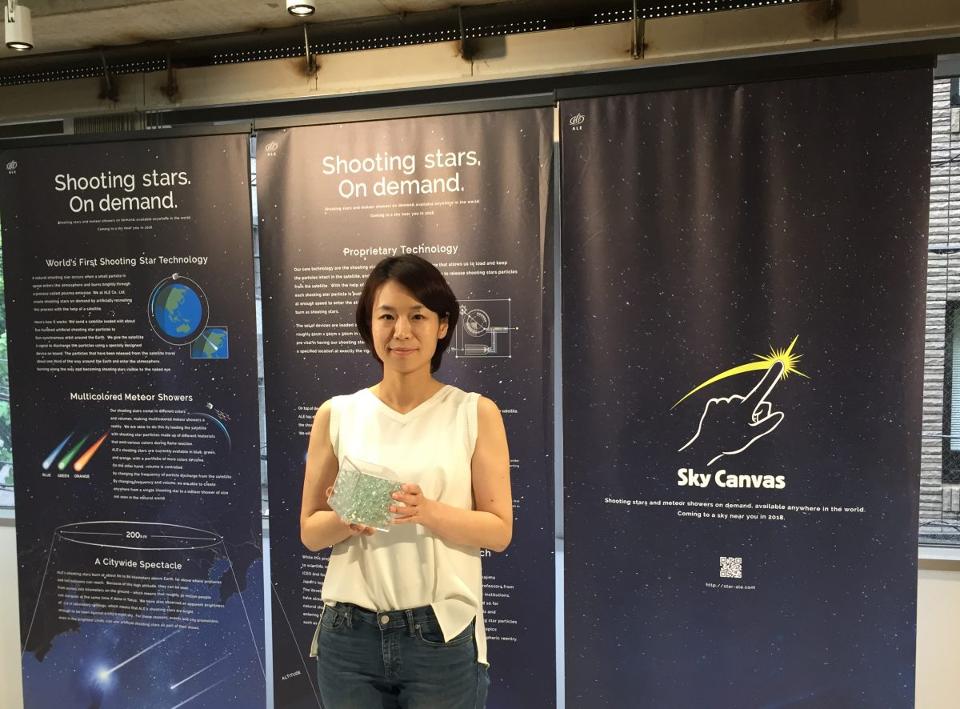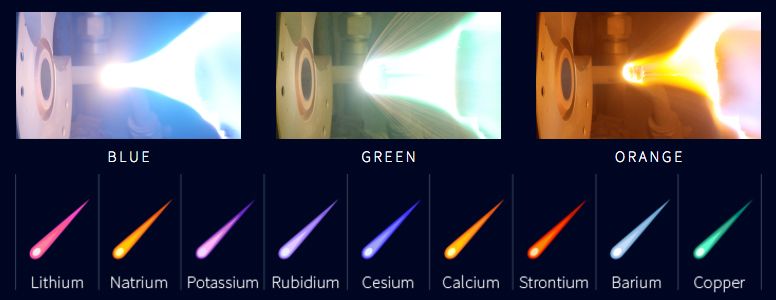
Meteor showers occur several times a year. Astronomers in advance form a schedule with the dates of starfalls, so that anyone can see this phenomenon live at least once. In 2019, Japanese start-up ALE plans to include in its list its first-ever artificial meteor shower.
The idea of creating a startup ALE and his teamOn November 18, 2001, astronomy student Lena Okazima was in the mountains near Tokyo. Then she witnessed the
Leonids meteor
shower . Impressions of what he saw formed the basis of her
future project .
In 2011, Lena founded the company Ale Co., which is developing artificial starfalls. With microsatellites, experts launch spherical objects from special materials. Getting into the atmosphere of the Earth, they become hot and burn.
From Earth, it looks like a real meteor shower.
 Lena Okazima holds a cube with artificial meteors
Lena Okazima holds a cube with artificial meteorsThe main developers of the project:
- CEO - Lena Okazima (entrepreneur, PhD in astronomy);
- Technical Director - Toshinori Kuwahara (Associate Professor, Department of Aerospace Engineering, Graduate School of Engineering, Tohoku University);
- engineers - Hironori Sahara (Professor of the Department of Systems Design at the University of Tokyo), Takeo Watanabe (Associate Professor at the Faculty of Mechanical Engineering at the Kaganava Institute of Technology), Shinsuke Abe (Associate Professor at the Department of Aerospace Engineering Nihon University).
In an interview with Forbes, Okazdima stated that the whole team consists of 13-14 people.
You can read about the early stages of project preparation
in this post .
The advantages of artificial stargazing:
- the possibility of planning meteor showers;
- the presence of objects of different colors and sizes;
- brightness is much higher than that of ordinary space bodies;
- burning duration up to 10 times longer;
- the opportunity to see the starfall in urban environments.
 When will the first artificial starfall pass?
When will the first artificial starfall pass?Sky Canvas is a project of the world's first artificial meteor show from ALE. Date and place of sale - the beginning of 2019 in Hiroshima. The startup received support from major educational institutions such as Tohoku University and Tokyo Metropolitan University, as well as funding from FamilyMart and JAL.
To implement the idea, developers will use two microsatellites with special charges that light up when they enter the Earth's atmosphere. Their number on board varies from 500 to 1000. The weight of one satellite is 50 kilograms.
Devices will be placed into heliosynchronous orbit. Being on it, the cosmic body at the same time passes over certain points on the planet. Thanks to this, the team will always know exactly when it is possible to start a meteor shower.
It is planned that the "stars" will be visible from 5 to 10 seconds at a distance of 200 kilometers in any direction, and the show itself will last up to 8 minutes.
How much does a light show cost?The cost of one artificial meteor is more than 8 thousand dollars. You can run from 500 to 1000 objects. In addition, the team will incur expenses
for the launch of the satellite into orbit . Thus, the cost of the show will vary from 8 to 10 million dollars.
In the case of a successful launch, ALE technology can be used
at the Olympic Games in Tokyo in 2020 to fill the sky above the Olympic Stadium with shooting stars on the night of the opening ceremony.